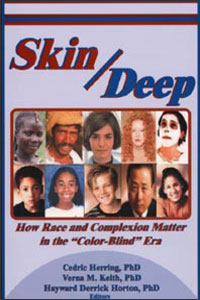Fathers of Conscience: Mixed-Race Inheritance in the Antebellum South (Book Review)Posted in Articles, Book/Video Reviews, History, Law, New Media, Slavery, United States on 2010-02-03 22:50Z by Steven |
Fathers of Conscience: Mixed-Race Inheritance in the Antebellum South (Book Review)
Civil War Book Review
Louisiana State University Special Collections
Kelly Kennington, 2009-2010 Law & Society Postdoctoral Fellow
Institute for Legal Studies
University of Wisconsin Law School
Jones, Bernie D. Fathers of Conscience: Mixed-Race Inheritance in the Antebellum South, University of Georgia Press. 216 pages. 2009.
Fathers of Conscience, Bernie D. Jones, Assistant Professor of Legal Studies at the University of Massachusetts-Amherst, examines southern state appellate court decisions concerning the wills of white slaveholders who left property to their mixed-race children. As numerous scholars have demonstrated, white slaveholders often engaged in sexual relationships with enslaved women. Southern communities typically accepted this behavior, as long as it remained hidden. But problems arose when white men chose to recognize the children of interracial unions and grant them freedom and property, particularly when these grants came at the expense of white relatives. In the latest contribution to the Studies in the Legal History of the South series, Jones argues that contests over wills forced southern judges to weigh the right of white slaveholders to dispose of their property as they wished against community concerns about the growing free black population and the threat it posed to the institution of slavery.
The first two chapters of Fathers of Conscience describe the types of cases that resulted throughout the antebellum South when potential white heirs challenged the validity of a slaveholder’s will, focusing especially on the language southern jurists used in their decisions. The first chapter argues that judges had “a limited set of tropes from which to choose” in deciding cases involving mixed-race inheritance, so they primarily described white testators in three ways: as “righteous fathers” who took responsibility for their mixed-race children; as “vulnerable old men” who were under the control of their enslaved black sexual partners; and as “degraded creatures” who garnered the disgust of southern jurists (42). In the second chapter, Jones describes judges whose language focused not on categorizing white men but on the consequences of these wills for southern society. Judges in these instances rebuffed white men’s efforts to free their enslaved children because jurists recognized the dangers of expanding the population of free people of color. In doing so, Jones argues that judges were “hiding behind the formal laws of slavery” when they cited statutes to deny the validity of wills (57)…
Read the entire review here.
